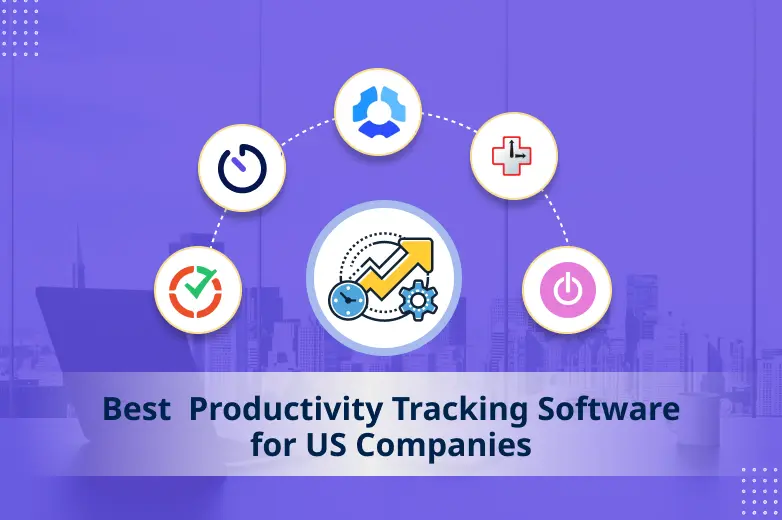Table of Contents
It’s a bright Monday morning, and the huddle of the week is about to begin. Mellow anticipation stands in the air: the deadlines are around the corner, and the stress is looming, while motivation seems so far away over the Seven Seas.
As a manager, you are familiar with the frustration of accomplishing the required work within the said timeline. But what if you decided to confound this trend?
Enter members of the team who are competent, believe they belong, feel empowered, and are stoked to do their best. Sounds like a fairy tale? Well, it is indeed possible with the right kind of mindset.
In this guide, we will unfold 7 productivity management techniques for keeping teams productive. The established techniques will give you the tools to accept challenges with open eyes in an environment conducive to high productivity while ensuring your team stays inspired toward success.
So, let’s bring it all together and see if we can change Mondays from a source of stress to an opportunity for endurance and success.
Common Challenges in Team Productivity
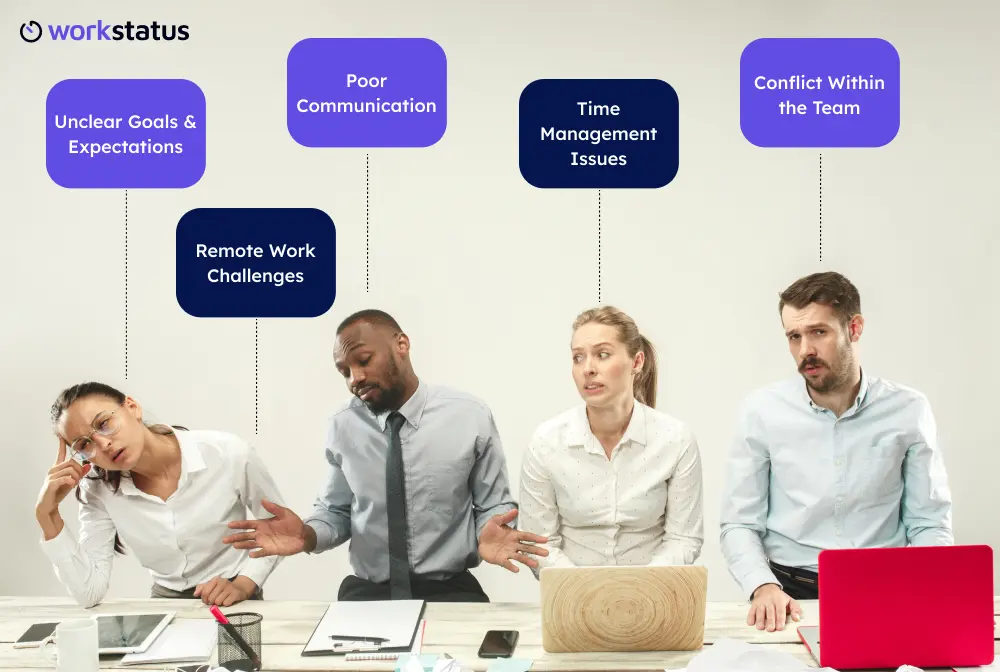 Imagine this: varying levels of productivity within the team are experienced in spite of the best efforts. Deadlines are missed, communication fails, and motivation takes a hit. Does this sound familiar? The underlying issue occurs often, and recognizing it is the first step toward resolution.
Imagine this: varying levels of productivity within the team are experienced in spite of the best efforts. Deadlines are missed, communication fails, and motivation takes a hit. Does this sound familiar? The underlying issue occurs often, and recognizing it is the first step toward resolution.
Addressing the following challenges effectively requires a focus on time management:
Unclear Goals and Expectations
Without direction, teams are
- Disturbed
- Confused
- Unproductive
Sometimes, unclear priorities or deliverables result in divergence in team effort and wasteful use of time.
Deciding what goals need to be accomplished is important for productivity management techniques.
Poor Communication
One wrong communication leads to
- Errors
- Delays
- Frustration
Insufficient information sharing due to the lack of transparency and collaboration has isolated the members.
Some tools, like Workstatus, help close the gap between distances through open communication channels. To enhance communication, consider implementing effective workplace strategies.
Time Management Issues
Poor time management leads to
- Failure to meet deadlines
- Wasted time on mundane tasks
With a clear deadline and the best time-tracking software, a team can work smarter and faster on their high-impact work.
Conflict Within the Team
Unresolved conflicts harm
- Morale
- Employee productivity
Clashing personalities or differing opinions create tension. Addressing disputes early and fostering teamwork turns challenges into growth opportunities.
Remote Work Challenges
Remote teams deal with
- Alignment
- Accountability
- Engagement issues
Tools such as Workstatus allow for proper employee productivity tracking of in-progress work, but for a successful remote workforce, trust and connection should be equally built and maintained. Productivity management is crucial in such scenarios.
Faced with these challenges, however, are the 7 Essential Management Techniques, which can help build a highly productive and engaged team.
Understanding the Importance of Team Productivity
At a growing software startup, the team was filled with talented individuals, each excelling in their domain.
Despite their skills, deadlines were often missed, meetings were unproductive, and projects stalled. Team members’ frustration grew as miscommunication and inefficiency affected their work.
One day, the leadership called for a company-wide meeting. “We have brilliant minds here, but we’re not working as a team. Productivity isn’t just about working harder; it’s about working smarter—together,” they said.
New strategies were introduced to enhance productivity:
- Implementation of a clear workflow with task management software.
- Daily stand-up meetings to align goals and improve communication.
- Clearly defined roles to reduce confusion and overlapping tasks.
- Encouragement of open communication and collaboration.
- Emphasis on work-life balance to prevent burnout.
Within weeks, the change was noticeable:
- The marketing team collaborated seamlessly with developers.
- Deadlines were met without last-minute rushes.
- Innovation flourished, leading to business growth.
- Morale and overall job satisfaction improved.
This personal statement provided the team with an insight: while working alone is good, working as a team takes things to the next level.
The startup proved, by fostering communication, structure, and cooperation, how chaos could be transformed into successful complexity through teamwork in the attainment of excellence. Performance improvement methods are fundamental to obtaining these kinds of outcomes.
7 Management Techniques for a Productive Team
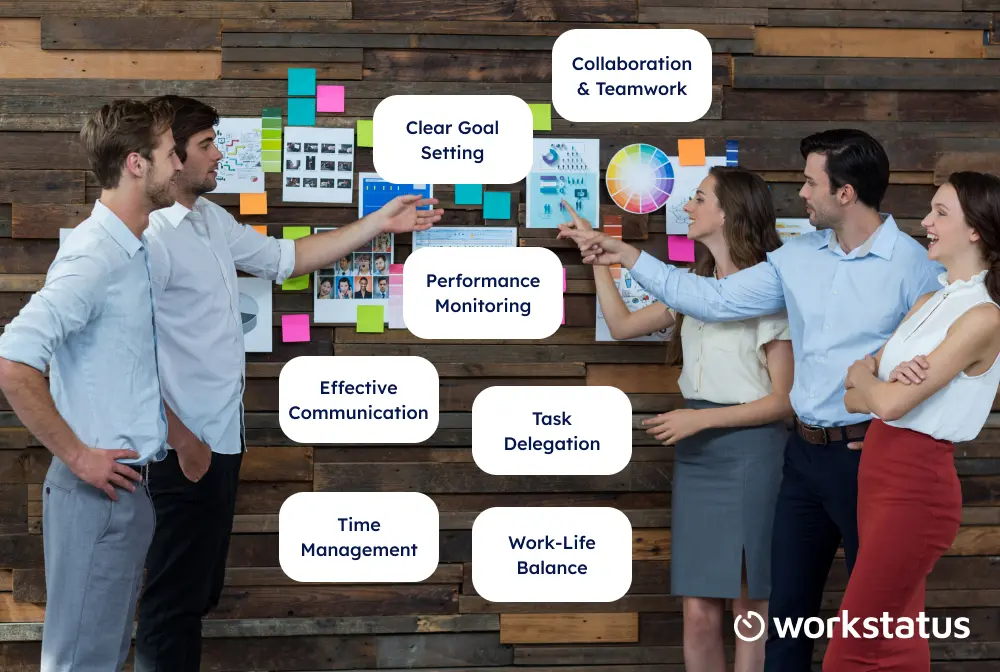 At a fast-growing company, a newly formed team struggled with missed deadlines, unclear roles, and communication gaps.
At a fast-growing company, a newly formed team struggled with missed deadlines, unclear roles, and communication gaps.
Frustration grew as projects lagged and motivation dwindled. Leadership realized that something had to change. They transformed the team into a high-performing unit by implementing key management techniques. Besides, these team productivity tips can be transformative for teams.
Here are the prominent 7 management techniques for a productive team:
Clear Goal Setting
Defining objectives and key results aligned the team’s efforts and provided clear direction. When everyone understood the goals, they could work with purpose and confidence.
Effective Communication
Creating an open environment allowed team members to share ideas, raise concerns, and provide feedback. Regular check-ins and transparent discussions eliminated misunderstandings and fostered trust.
Task Delegation
Assigning responsibilities based on strengths and expertise maximized efficiency and boosted confidence. Clearly defined roles helped eliminate redundancies and ensured accountability.
Time Management
Prioritizing tasks, setting deadlines, and using time-blocking techniques improved focus and execution. Team members learned to manage workloads efficiently, reducing last-minute stress.
Collaboration & Teamwork
A culture of collaboration led to faster problem-solving and innovative solutions. Improving collaboration is a core component of team productivity tips.
Performance Monitoring
Using employee productivity monitoring tool and regular check-ins helped evaluate progress and provided constructive feedback. Recognizing achievements and addressing challenges in real-time kept the team on track.
Work-Life Balance
Combining work and personal life prevented burnout and motivated the team. Leadership allowed breaks, flexible hours, and wellness initiatives to keep energy and creativity flowing. Promoting a good work-life balance significantly impacts productivity management techniques.
Within mere months, deadlines were met, productivity soared, and morale reached a peak high. Employees felt more engaged, valued, and motivated.
By incorporating these techniques, managers will build a culture of performance, teamwork, and success, which will benefit the employees and the organization in the long run.
Using Workstatus to Enhance Productivity
 If you want the company to remain neither irrelevant nor extinct, it should not be left with scant means to enable the workers to stay productive and coordinated. Workstatus created a perfect solution for streamlining workflows to ensure transparency and efficiency.
If you want the company to remain neither irrelevant nor extinct, it should not be left with scant means to enable the workers to stay productive and coordinated. Workstatus created a perfect solution for streamlining workflows to ensure transparency and efficiency.
Here are the key features:
Time Tracking
![]() Workstatus provides accurate time & attendance management, allowing teams to log hours spent on tasks and projects. This feature helps identify:
Workstatus provides accurate time & attendance management, allowing teams to log hours spent on tasks and projects. This feature helps identify:
- Time drains
- Ensures accountability
- Keeps focused on high-priority work
Automated Timesheets and Payroll
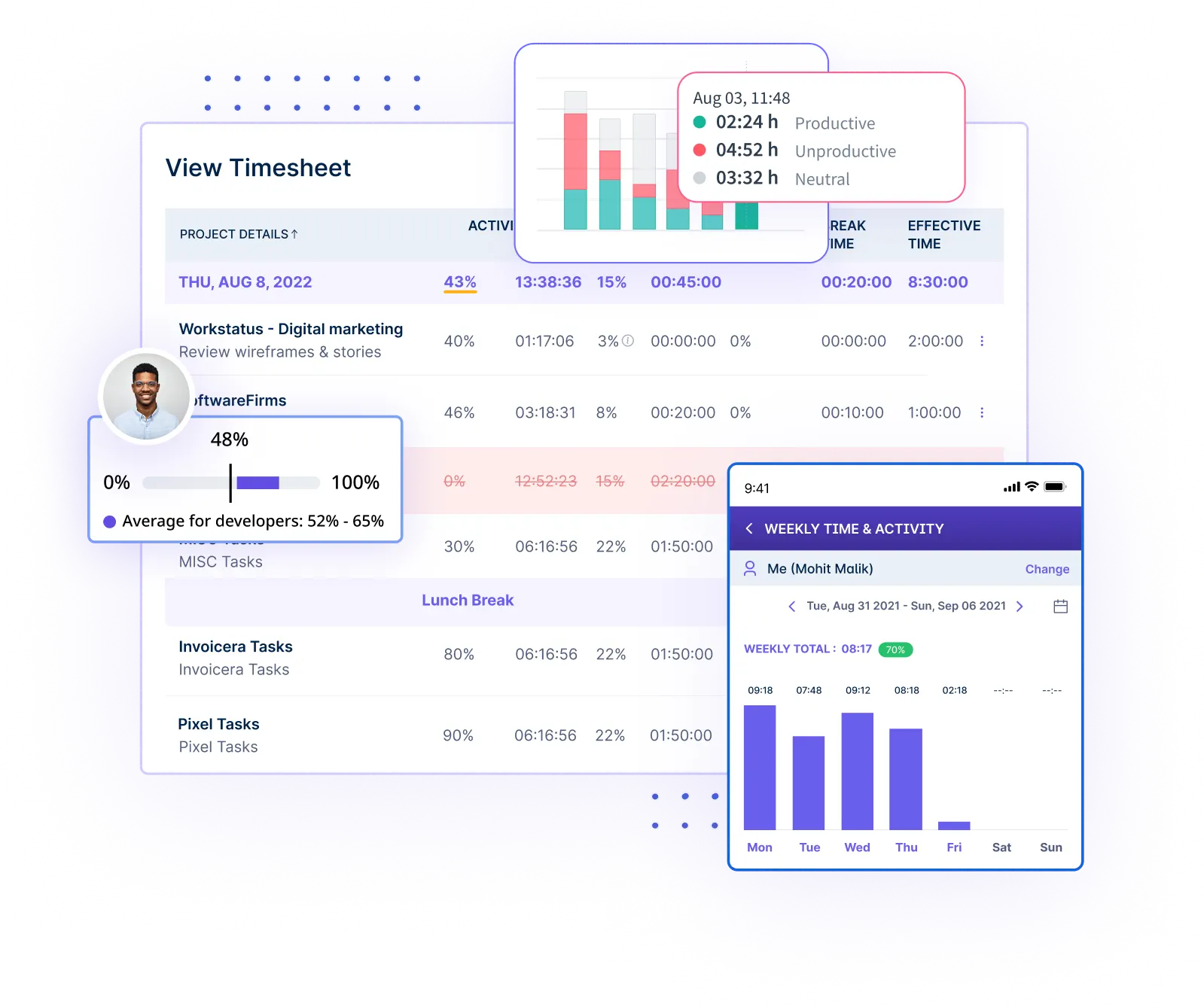 Say goodbye to manual timesheets! Workstatus helps to
Say goodbye to manual timesheets! Workstatus helps to
- Automate the process
- Reducing errors
- Saving time
It also integrates with payroll systems, ensuring accurate and timely payments for your team.
Task Monitoring
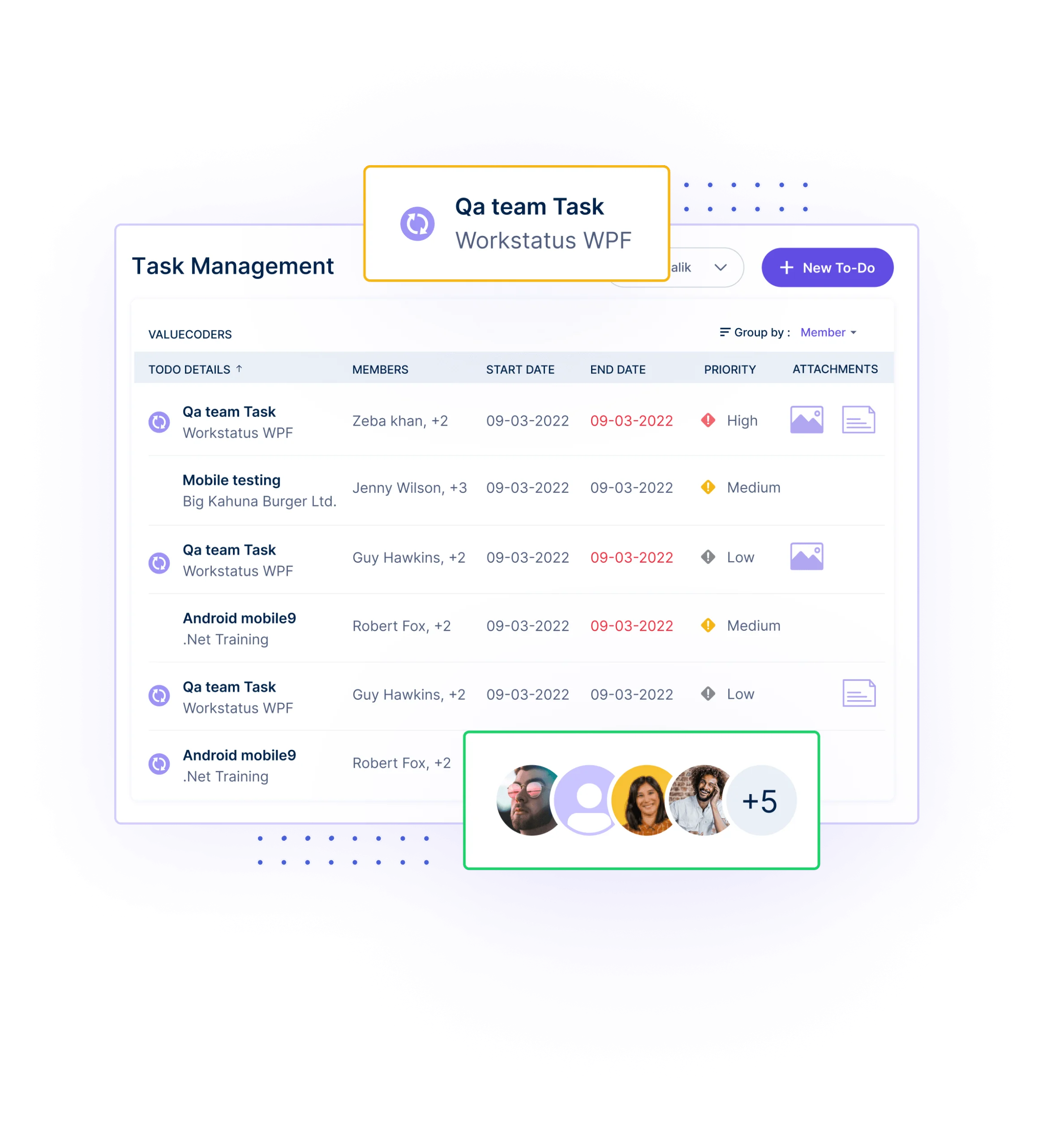 Real-time task monitoring allows managers to
Real-time task monitoring allows managers to
- Track progress
- Identify bottlenecks
- Meet deadlines
This feature keeps everyone on the same page and helps prioritize tasks effectively.
Project Management Integration
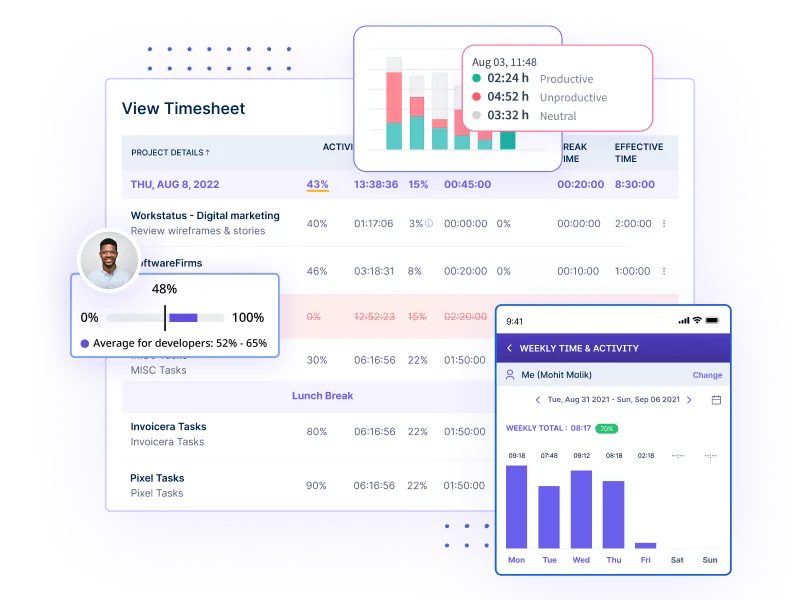 Workstatus integrates with popular project management tools, creating a unified platform for
Workstatus integrates with popular project management tools, creating a unified platform for
- Task assignments
- Tracking progress
- Collaboration
This integration breaks down barriers and enhances workforce management team coordination.
Customizable Reports and Dashboards
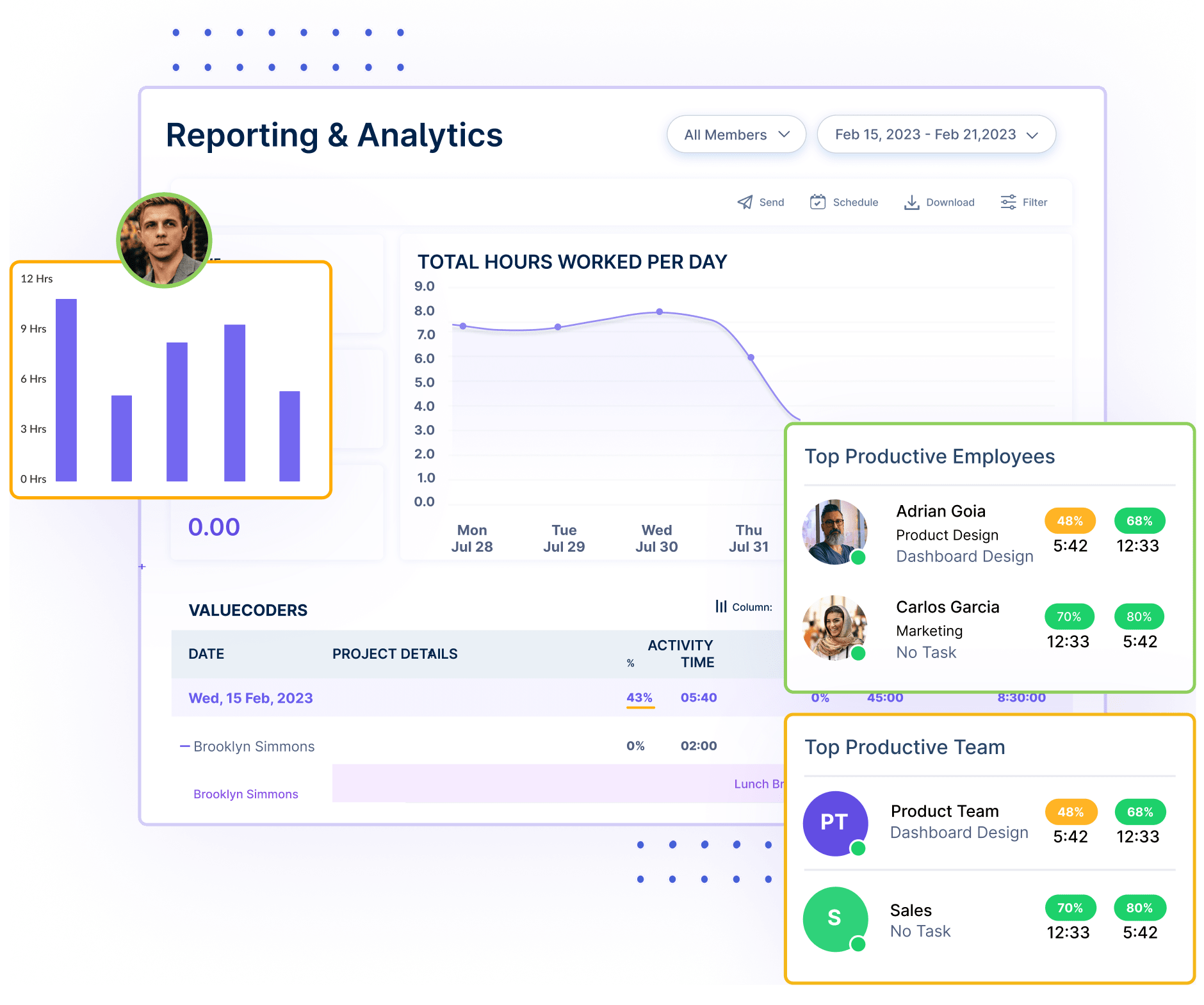 When detailed insights are required, customizable reports and dashboards are available. Workstatus develops analytical information on
When detailed insights are required, customizable reports and dashboards are available. Workstatus develops analytical information on
- Productivity
- Time allocation
- Project progress
to help managers make informed decisions and optimize workflows.
Employee Scheduling and Shift Planning
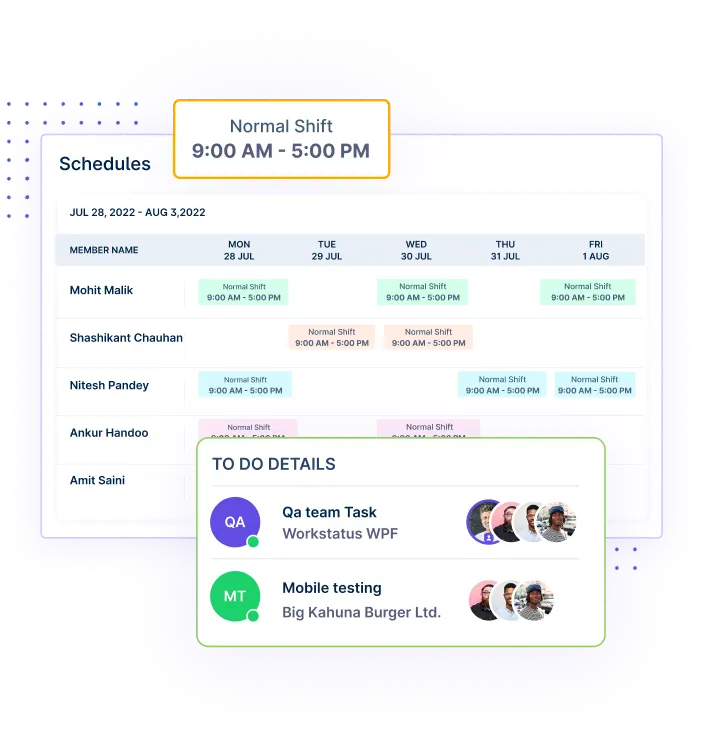 Workstatus-trained shifts and schedules are easily managed by shifting or changing employees’ assignments. This way, the right people can be appropriately allocated to tasks at the proper time, ensuring maximum productivity and minimal downtime.
Workstatus-trained shifts and schedules are easily managed by shifting or changing employees’ assignments. This way, the right people can be appropriately allocated to tasks at the proper time, ensuring maximum productivity and minimal downtime.
How Workstatus Supports Productivity?
- For Managers: Visibility into team activities, maintaining progress, and keeping track of problems and areas that need improvement. This is crucial for productivity management techniques.
- For Teams: Focus on productivity, meet deadlines, and collaborate with clear task assignments and real-time progress updates.
- For Remote Work: Maintain distributed teams’ accountability, transparency, and cohesion.
Incorporating Workstatus into your day-to-day operations will help you tackle common productivity issues while ensuring your team reaches its highest potential. It’s not just another productivity tool; it positions itself as a savior of modern team management. Optimizing processes is a cornerstone of workforce optimization.
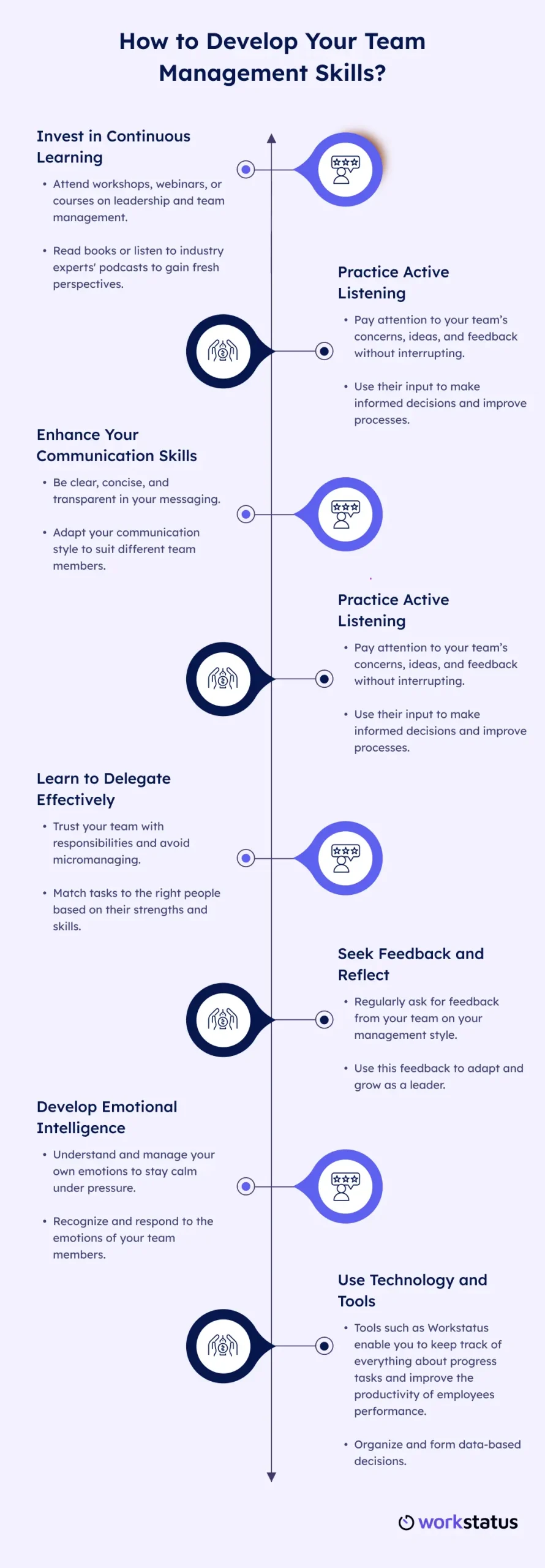
Closing Thoughts
Productivity is not about micro-managing or pushing harder; it is induced by creating conditions, expectation-setting, and empowering the team to win. These seven management techniques improve productivity and promote a culture of collaboration, motivation, and growth. Effective team management is key to improved team productivity tips.
Good management is, remember, a journey, never a destination. Start from the most manageable option, and with commitment, you will see your team grow. All through Workstatus: smooth tracking, collaboration, and productivity management.
FAQs
Ques: Which management approaches are crucial for improving team efficiency?
Ans: Seven key concepts indicate their importance: goal setting, effective communication, feedback, delegation, time management, conflict resolution, and recognition of achievements.
Ques: What part does recognition play in enhancing the productivity of teams?
Ans: Recognition and rewarding achievements energize team members. This not only uplifts morale but also promotes appreciation within the group; hence, it enhances engagements and productivity.
Ques: How does an application like Workstatus support team productivity?
Ans: Workstatus provides several winning features-short and long tasks recording done, tracking and monitoring work, and customization of reports-so that the manager will be able to streamline processes, build transparency, and follow up with the team.
Ques: Why is the delegation of tasks so important in team productivity?
Ans: Delegating tasks empowers team members, builds trust, and gives managers more opportunities to focus on strategic tasks, thus ensuring an even hand in distributing work.
Ques: How can one open up team communication while resolving conflict?
Ans: Conflicts should be tackled in an early stage, talked through openly, and all possible solutions must respect the opinions of all to retain a good working environment.





